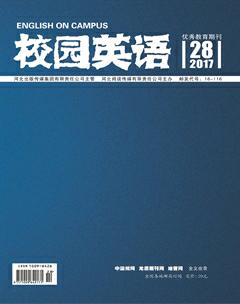Grammar Teaching
李昌昌
Grammar teaching has been debated a lot in terms of “whether grammar should be taught or not” and “how to teach grammar”. Many linguists and educators have done research and written papers on that topic. Despite the productive results of grammar in second-language research and methodology over the years, the language teachers cognitions (knowledge, attitudes, beliefs, and practices) and its relation to the teaching of grammar in classroom is rarely explored. Moreover, the current studies conducted in this topic mostly choose native English teachers as the participants and few have addresses non-native English teachers in countries where English is a foreign language. In response to this gap, the present study focuses on analyzing the teaching of grammar in an second-language classroom from the perspective of the personal pedagogical systems, such as teachers beliefs, knowledge, theories, assumptions and attitudes, which would play a significant role in the decisions of choosing the grammar teaching methods .
There are still some problems in English grammar teaching in China. Chinese students are reluctant to learn grammar because they think it is too dull and too difficult to master. The effects of teaching methods are very unsatisfactory, most students lack systematic grammar knowledge. Some students can pass the grammar examinations, yet fail to communicate outside the classroom and always make various oral and written mistakes in application. The most common phenomena of grammar learning is that students spent a lot time memorizing those abstract grammatical rules and are good at grammar test, however, they do not know how to connect the grammatical knowledge with the real language in everyday life and they do not regard this process as meaningful, challenging and useful. When they are asked to produce English orally or verbally, numerous errors are made. One reason to explain this phenomena is that the ineffective teaching method in class, Chinese teachers just introduce and describe grammar rules one by one theoretically and all students have to do is just remember and do many related exercised. This is actually related to how teachers consider grammar, if they cannot regard grammar as abstract rules, but as a useful tool for communication in real context, they might change the way of teaching grammar. Grammar should not be isolated with the basic four skills. Another reason is that students attitude toward grammar teaching, they feel it is dull and boring, thus they have no interest in learning. As effective language educators, it is their responsibility to develop students ability to use grammar correctly and meaningfully.endprint
In recent years, more and more Chinese scholars begin to explore the grammar teaching methods that are suitable for China and consider the status of grammar teaching in college English teaching.The traditional method, grammar–translation method refers to students learn grammatical rules and then apply those rules by translating sentences between the target language and the native language. In this approach, students learn grammar rules through a fixed procedure, and practice the rules mostly by translating sentences to and from the target language. However, there is not usually any listening or speaking exercises, and very little attention is paid on communicative aspects. The main method in the traditional grammar teaching is explicit grammar teaching, which aims on mastering grammar by studying grammar rules and emphasize the awareness purpose. The advantage of this method is that students can learn grammar rules profoundly and systematically, yet there is little practical application of language.
Implicit grammar teaching is also known as suggestive method, mainly adopting the inductive thinking method, and inducing the grammar rules through communicative use of the language. Unlike Explicit grammar teaching, which is teacher-centered teaching in classroom and students passively receive the objects, while Implicit grammar teaching help students gain a better understanding of the relationship between the form, meaning and function by integrate abstract rules into a communicative context.
References:
[1]Borg,S.(1999).Teachers theories in grammar teaching.ELT Journal,157-167.
[2]Borg,S.(2001).Self perception and practice in teaching grammar.ELT Journal,21-29.
[3]Borg,S.(2003).Teacher cognition in language teaching:A review of research on what language teachers think,know,believe and do.Language Teaching,81-109.
[4]Burgess,J.E.(2002).Focus on grammatical form:Explicit or implicit? System,433-458.
[5]Burn,A.(1996).Starting all over again:From teaching adults to teaching beginners.Teacher learning in language teaching,154-177.
[6]Dornyei,Z.(2009).The Psychology of SEcond Language acquisition.Oxford University Press.endprint

